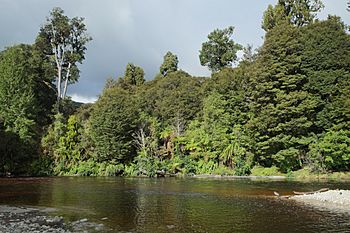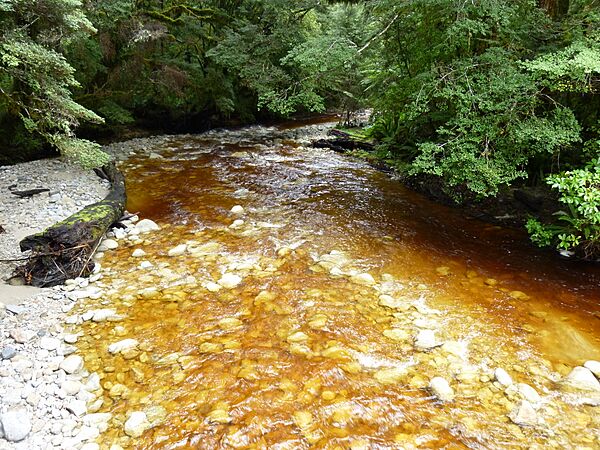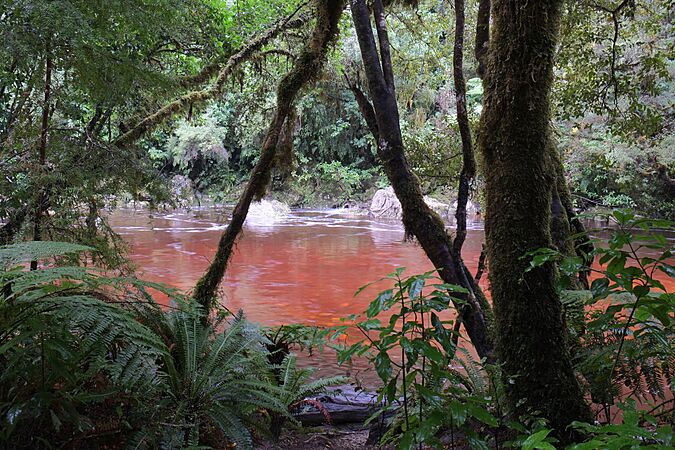Oparara River facts for kids
Quick facts for kids Ōpārara River |
|
|---|---|

Ōpārara River near Moria Gate Mirror Tarn
|
|
| Country | New Zealand |
| Physical characteristics | |
| River mouth | Karamea Bight 0 metres (0 ft) |
| Length | 25 kilometres (16 mi) |
The Ōpārara River is a beautiful river found on the West Coast of New Zealand's South Island. It's famous for the amazing limestone arches it has carved over many years in the Oparara Basin.
Contents
Journey of the Ōpārara River
The Ōpārara River starts its journey in the Fenian Ranges. These ranges are part of the Kahurangi National Park. The river flows through a special place called the Honeycomb Hill Cave.
Famous Arches and Walking Tracks
Further along, the river continues through two well-known natural arches. These are the Ōpārara Arch and the Moria Gate Arch. Both arches are very popular spots for walking and exploring. Even though these areas are deep inside a thick native forest, you can reach them by a forestry road.
For most of its path, the Ōpārara River winds its way south. It flows through the Ōpārara Basin. Then, it turns west and empties into the Tasman Sea. This happens near a small village called Ōpārara, which is north of the town of Karamea.
The River's Unique Color
The Ōpārara River has a very special color. It can look like golden-brown tea or even red. This happens because of natural substances called tannins.
How Tannins Stain the Water
Tannins are released into the water from plants. Leaves and other plant parts fall onto the forest floor. As they break down, they release these tannins. The tannins then seep into the water and stain it. The exact shade of the water can change. It depends on how much rain there has been and what season it is.
Wildlife in the Ōpārara River Area
The Ōpārara River and its smaller streams are home to important wildlife.
The Endangered Blue Duck
One special bird found here is the South Island blue duck, also known as the whio. This bird is endangered, meaning it's at risk of disappearing forever. The Ōpārara area used to have many whio. Now, the New Zealand Department of Conservation runs a program here. They are working hard to help the whio population recover.
The Giant Land Snail
Another rare creature is the Ōpārara giant land snail. Its scientific name is Powelliphanta annectens. This protected snail has only been found very close to the Ōpārara River. It lives within about 700 meters of the river.
Fishing in the Estuary
If you enjoy fishing, you can catch brown trout in the river's estuary. The estuary is where the river meets the sea. You can fish for trout here all year round.
Images for kids
- Waters of the Oparara River stained different hues from golden-brown to red by naturally occurring tannins



